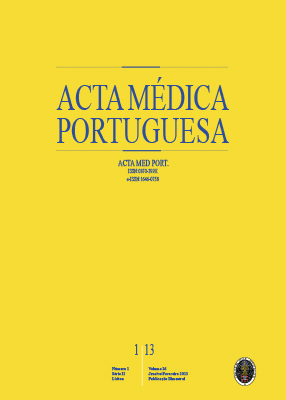Biochemical and Biophysical Investigation of Surfactant in Neonatal Gastric Aspirate at Birth
DOI:
https://doi.org/10.20344/amp.4010Abstract
Background: The optimal approach to detection of surfactant deficiency in the prematurely born infants at birth remains unclear and the decision to apply exogenous surfactant is based mainly on the development of clinical and radiological signs of neonatal respiratory distress syndrome (NRDS). Objectives: We studied the biochemical and biophysical properties of gastric aspirates (GA) from prematurely born infants with NRDS and healthy full term infants with an aim to find an approachable method for assessment of surfactant maturity at birth. Material and Methods: Forty-seven newborn infants divided into two groups were enrolled in the study. The first group comprised 34 healthy infants born at term (after 37 weeks of gestation). The second group included 13 premature infants (aged from 26 to 32 weeks of gestation) developing clinical signs of NRDS for which they were treated by assisted ventilation and exogenous surfactant. A biochemical analysis of the protein and lipid content of GA collected at birth was performed. The fatty acid composition of the GA samples was determined by Gas Chromatography-Mass Selective Detector (GS-MSD) analysis. The surface characteristics (equilibrium, maximal and minimal surface tension values) of the GA samples were measured by using the pending drop method. Data were compared between the groups by using Student’s t test or Mann-Whitney analysis. Values were considered significantly different if the p value was ≤ 0.05. Results: The mean phospholipids’ concentration in GA of the premature infants was lower (295.7 μg / ml vs. 374.5 μg / ml) than in the term infants and the mean protein content was less in GA of the premature babies than the term newborns (574.5 μg / ml vs. 641.5 μg / ml). The measurement of dynamic surface characteristics of GA showed significantly higher mean values of the minimal surface tension (γmin) in the premature infants – 20.5 m / Nm compared to the term babies - 12.3 mN/m (p < 0,01). There was no difference between the equilibrium surface tensions (38 mN/m vs. 38 mN/m) of both groups; The mean values of maximal surface tension (γmax) in GA did not differ significantly between the groups (50.1 mN/m vs. 48.5 mN/m). Conclusion: Our findings revealed lower phospholipids’ and protein concentrations in the GA at birth from premature infants as compared to the healthy term infants. The dynamic surface characteristics of GA had significant differences between the two groups, the minimal surface tension being the most important parameter for evaluation of surfactant maturity. It could be used in the clinical practice for fast surfactant’s assessment in the premature infants in regard to administration of exogenous surfactant.
Downloads
Downloads
Published
How to Cite
Issue
Section
License
All the articles published in the AMP are open access and comply with the requirements of funding agencies or academic institutions. The AMP is governed by the terms of the Creative Commons ‘Attribution – Non-Commercial Use - (CC-BY-NC)’ license, regarding the use by third parties.
It is the author’s responsibility to obtain approval for the reproduction of figures, tables, etc. from other publications.
Upon acceptance of an article for publication, the authors will be asked to complete the ICMJE “Copyright Liability and Copyright Sharing Statement “(http://www.actamedicaportuguesa.com/info/AMP-NormasPublicacao.pdf) and the “Declaration of Potential Conflicts of Interest” (http:// www.icmje.org/conflicts-of-interest). An e-mail will be sent to the corresponding author to acknowledge receipt of the manuscript.
After publication, the authors are authorised to make their articles available in repositories of their institutions of origin, as long as they always mention where they were published and according to the Creative Commons license.









